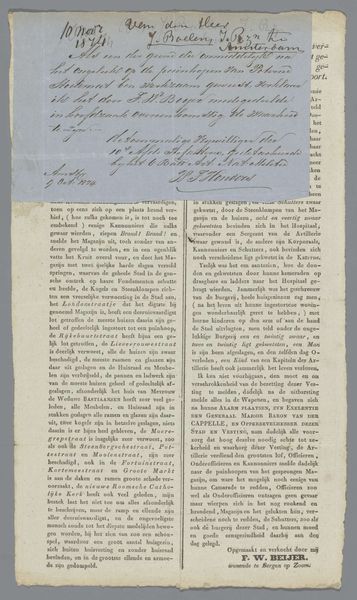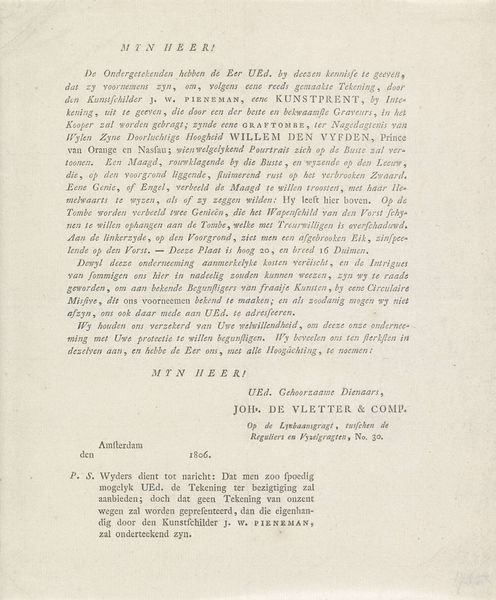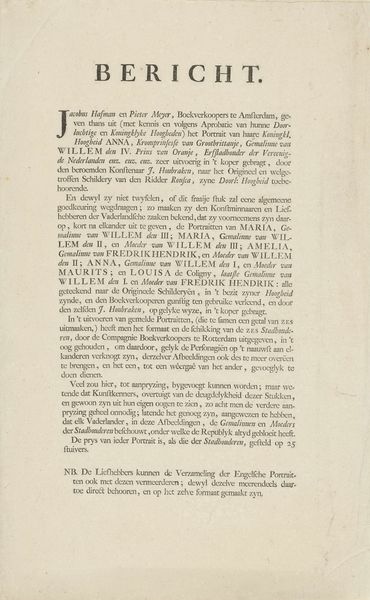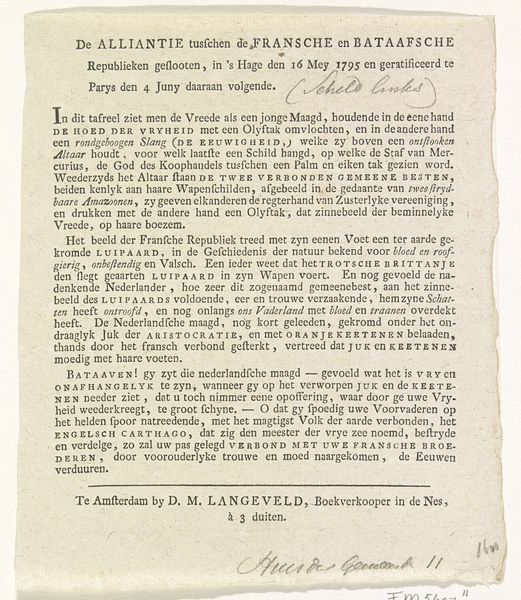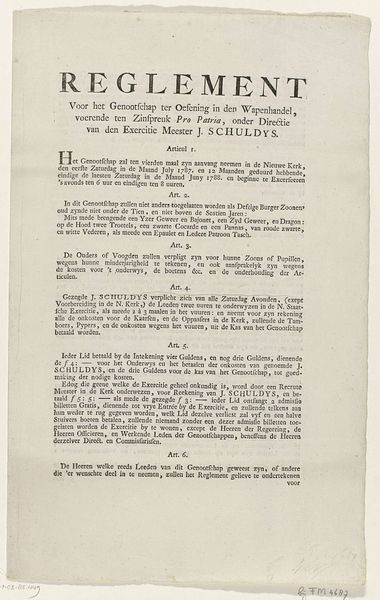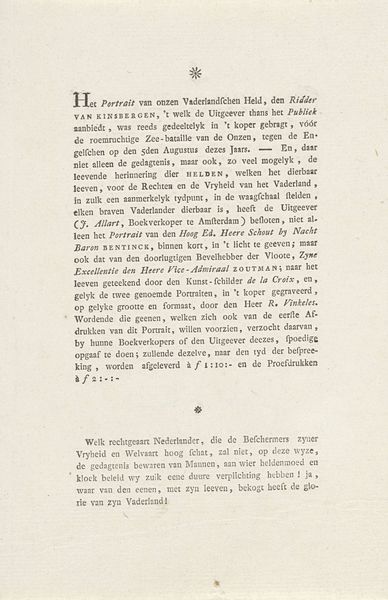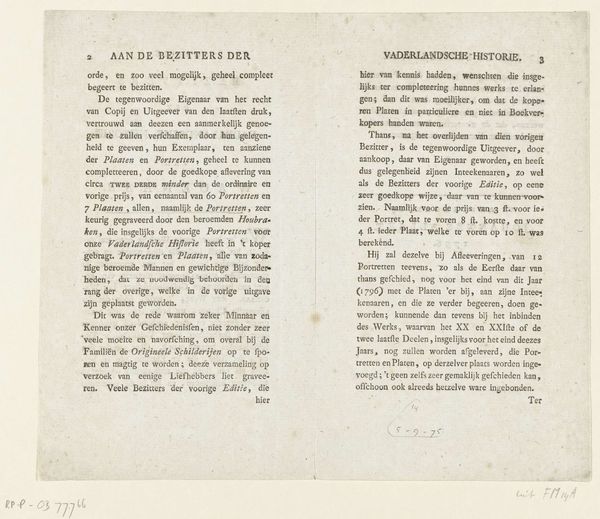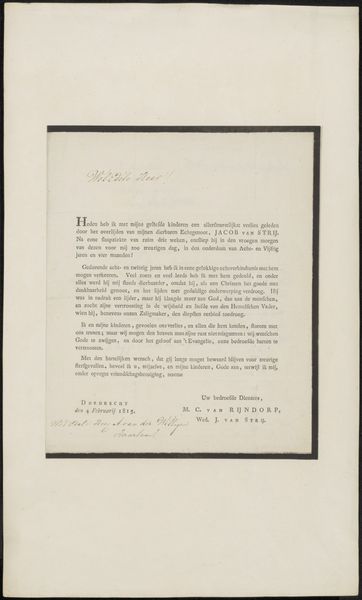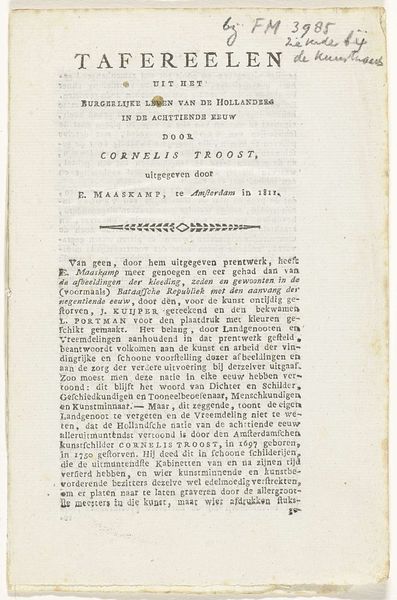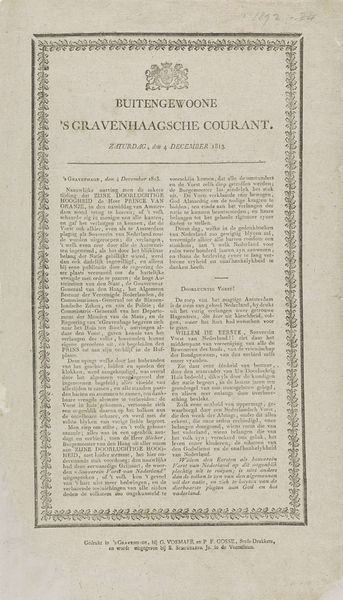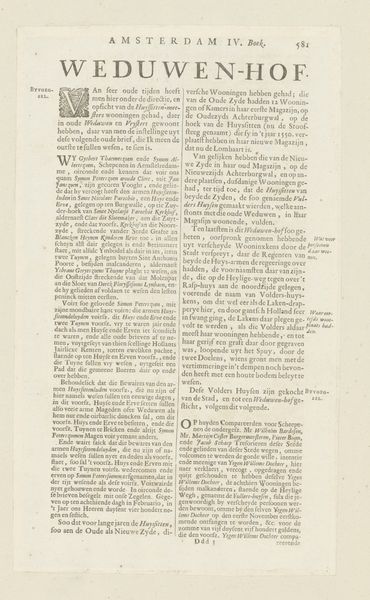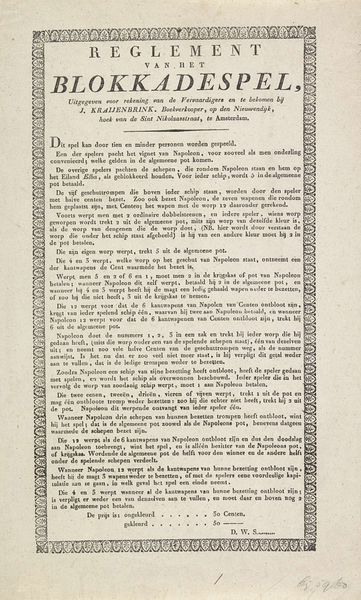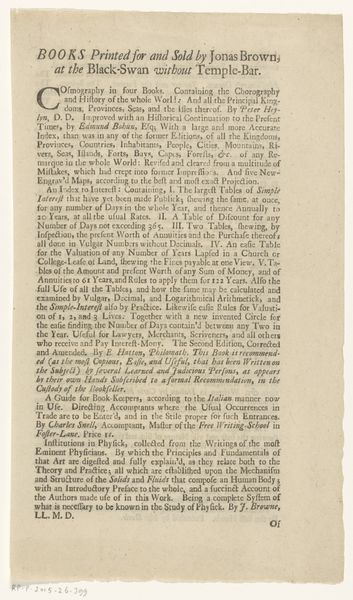
Brief aan de burgemeester van Schipluiden over de dood van koningin Wilhelmina van Pruisen, 1837 Possibly 1837
0:00
0:00
adamfrancoisjulesarmandvanderduyn
Rijksmuseum
print, textile, paper, typography
# print
#
textile
#
paper
#
typography
Dimensions: height 316 mm, width 201 mm
Copyright: Rijks Museum: Open Domain
Curator: This printed announcement, likely from 1837, relays some sad news. It's titled "Brief aan de burgemeester van Schipluiden over de dood van koningin Wilhelmina van Pruisen." Adam François Jules Armand van der Duyn penned it. What strikes you about it at first glance? Editor: It’s so formal, even severe! All that black text regimented across the aged paper... It gives off a solemn air, almost like a decree. It looks important, even if I can't understand it. Curator: Yes, it served as the official notice to the mayors and aldermen regarding the passing of Queen Wilhelmina of Prussia. It expresses the deep sorrow felt by King Willem I and the Royal House, highlighting her virtues and contributions to the arts and sciences. It also asks the mayors to toll the bells. Editor: Ah, so it's about prompting a public display of grief? The tolling of bells—a very physical, aural manifestation of mourning. It’s fascinating how they're orchestrating collective emotion through typography and civic action. The request almost seems bossy! Curator: In a way, yes. It speaks to the authority the government exerted. Van der Duyn explicitly asks the city officials to order that bells be rung for eight days and that theaters should stay closed during the mourning period. The aim was to involve everyone in this public demonstration of sadness. Editor: I’m struck by the idea that grief could be so dictated. It makes you wonder how much was genuine sorrow and how much was coerced performance. Does the typeface itself, that rather gothic script, reinforce the formality, the mandatory nature of this mourning? Curator: That’s perceptive. The typography undeniably contributes to the somber and official atmosphere. And the announcement, printed on paper with what might be intentional roughness, shows just how intertwined public emotions and state apparatus were in that period. The material echoes its message. Editor: Looking at it, you feel the weight of tradition, power, and even that slight tinge of enforced emotion. It moves beyond a mere announcement; it embodies the complex interplay between personal sorrow and public duty. Curator: Indeed. It provides such an interesting perspective to better consider not just the queen’s death, but how the government handled its reception by the common citizen.
Comments
No comments
Be the first to comment and join the conversation on the ultimate creative platform.
